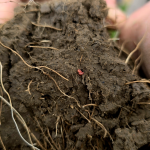Apple industry expects rebound despite cyclone damage
Added 2 years ago
By Hawke's Bay Future Farming Trust

While the area dedicated to apple trees has shrunk due to Cyclone Gabrielle, a recovery is expected in the coming years, according to a recent report by the United States Department of Agriculture (USDA).
The report predicts a significant drop in planted area, from 11,000 hectares in 2022/2023 to 9200 hectares in 2023/2024. This decrease is attributed to cyclone damage in key growing regions like Hawke's Bay and Gisborne.
However, the report also highlights reasons for optimism. New Zealand's apple production benefits from counter-seasonal timing compared to other countries, which should maintain strong market demand.
Challenges and opportunities
The recovery process faces hurdles. Rehabilitating damaged orchards is expensive, ranging from $180,000 to $250,000 per hectare. Additionally, obtaining new apple trees can take several years. This, coupled with rising debt levels amongst growers, could hinder the recovery effort.
Data discrepancies and upcoming updates
There are some discrepancies in the reported figures. New Zealand Apples and Pears (NZAP) estimates the area loss due to the cyclone to be nearly half of what the USDA reported. Additionally, the Ministry for Primary Industries (MPI) clarifies that the USDA figures combine apple and pear plantings.
The MPI is expected to release a more precise forecast for apple and pear plantings in their upcoming June 2024 Situation and Outlook for Primary Industries report.
Apple size concerns
The smaller apple size this season due to cyclone damage is a marketing concern. New Zealand typically grows larger apples to differentiate itself from competitors selling smaller fruit as a commodity.
Join the conversation
Be the first to leave a comment.
Leave a comment
All comments are reviewed before they are published on the website. Your email address will not be published.



Community Engagement and Knowledge Sharing Strengthen the Carbon Positive Project


Farewell to Trustee Phil Schofield – A Foundational Leader of the HBFFCT

